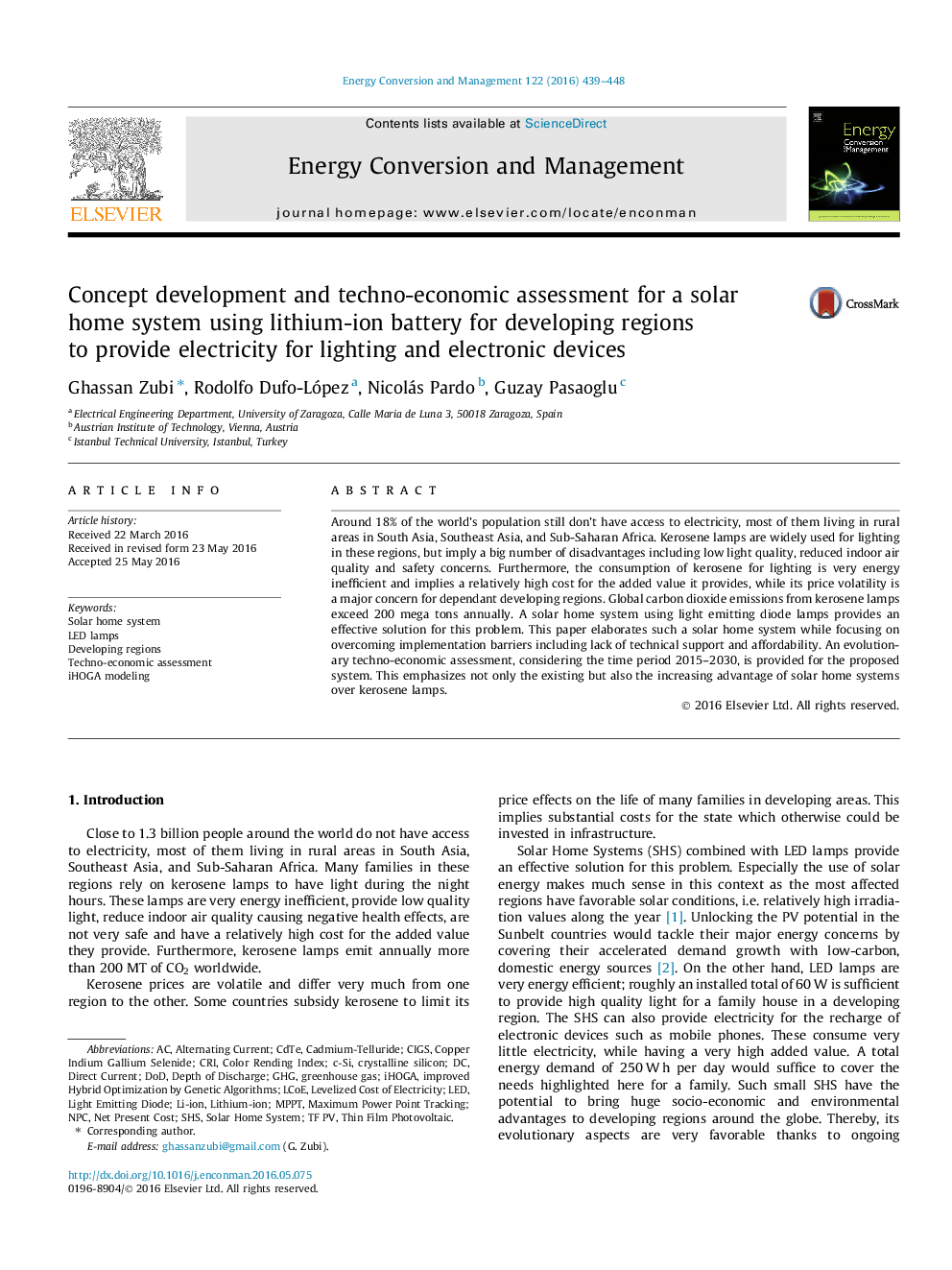| Article ID | Journal | Published Year | Pages | File Type |
|---|---|---|---|---|
| 7160385 | Energy Conversion and Management | 2016 | 10 Pages |
Abstract
Around 18% of the world's population still don't have access to electricity, most of them living in rural areas in South Asia, Southeast Asia, and Sub-Saharan Africa. Kerosene lamps are widely used for lighting in these regions, but imply a big number of disadvantages including low light quality, reduced indoor air quality and safety concerns. Furthermore, the consumption of kerosene for lighting is very energy inefficient and implies a relatively high cost for the added value it provides, while its price volatility is a major concern for dependant developing regions. Global carbon dioxide emissions from kerosene lamps exceed 200 mega tons annually. A solar home system using light emitting diode lamps provides an effective solution for this problem. This paper elaborates such a solar home system while focusing on overcoming implementation barriers including lack of technical support and affordability. An evolutionary techno-economic assessment, considering the time period 2015-2030, is provided for the proposed system. This emphasizes not only the existing but also the increasing advantage of solar home systems over kerosene lamps.
Keywords
CIGSSHSLCOEMPPTGHGLED lampsCRICdTeDODNPCTechno-economic assessmentc-SiAlternating currentDirect CurrentMaximum power point trackingLight emitting diodeLEDCopper indium gallium selenideSolar home systemCrystalline siliconDepth of dischargeLithium-ionDeveloping regionsLevelized cost of electricityNet present costGreenhouse gasLi-ion
Related Topics
Physical Sciences and Engineering
Energy
Energy (General)
Authors
Ghassan Zubi, Rodolfo Dufo-López, Nicolás Pardo, Guzay Pasaoglu,
